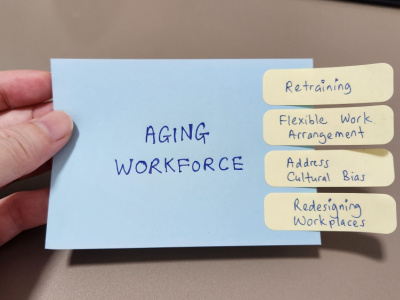It’s no secret that advanced economies are seeing a frightening demographic shift. Fewer births and greater longevity have combined to create older populations with fewer young people caring for the elders. This hasn’t been seen at any point in recent memory for most nations, and many observers have referred to it as the “demographic time bomb.”
The demographic time bomb is a slow trend that may lead to potentially dramatic results.
The Impact of an Aging Population
While governments look at the demographic time bomb and see crises in the areas of pensions, social security, and health care, businesses are primarily concerned with the impacts of an aging population on the labor force.
According to data presented in the Future of HR report by McLean & Company, “an aging and multigenerational workforce is already a reality but is expected to be more pronounced. On a global scale, labor force participation rates among the traditional working age group (25 to 54) is projected to decrease, whereas the proportion of older workers is expected to see increased labor force representation.”
For example, the proportion of 25- to 54-year-olds in the global workforce is projected to drop from 70.0% in 2020 to 68.3% in 2030. Over the same period, the proportion of 55- to 65-year-olds is expected to grow from 11.9% to 13.3%, and the proportion of those aged 65 and above is expected to increase from 4.1% to 5.1%.
Employers: Prepare to Take Proactive Action
The numbers in North America (United States and Canada) are even more pronounced, and the proportion of older workers is already higher than the projected global 2030 proportion. The proportion of 65+ workers in the United States is expected to grow from 25.8% in 2021 to 30.7% in 2031 and from 27.5% to 32.4% in Canada over the same period.
While many governments are looking at ways to tackle the demographic time bomb, employers shouldn’t sit back and wait. Leveraging new technologies such as artificial intelligence (AI) and taking deliberate steps to improve recruitment and retention numbers are a couple of ways companies can fight to stay ahead of the demographic curve.
Lin Grensing-Pophal is a Contributing Editor at HR Daily Advisor.

